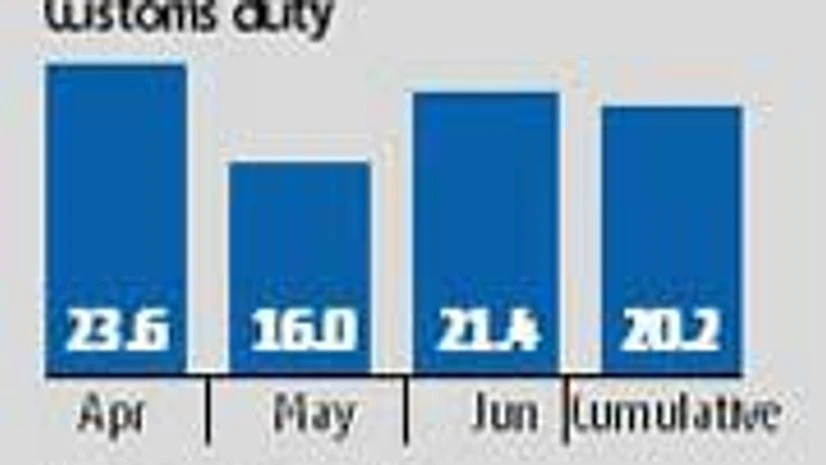The data, however, aren’t in sync with the subdued industrial growth of 2.7 per cent in May.
Various additional measures played a role in the rise in indirect tax collection — an increase in excise duty on petroleum products between November 2014 and January 2015, the withdrawal of excise duty exemption on auto and other consumer durables, and an increase in service tax from 12.36 per cent to 14 per cent (effective June).

Stripped of these measures, indirect tax collections would have risen only 14.5 per cent during the quarter, said a statement by the finance ministry.
For 2015-16, indirect tax revenue has been budgeted at Rs 6.46 lakh crore, which means growth of 19 per cent compared with Rs 5.44 lakh crore in the revised estimate for 2014-15.
“In April-June over the comparable period last year, indirect tax revenue grew a robust 37.5 per cent. Given GDP (gross domestic product) growth is the tax base, what it suggests is the underlying nominal GDP growth is growing at a healthy pace,” Chief Economic Advisor Arvind Subramanian was quoted as saying by PTI.
For April-June this year, central excise revenue stood at Rs 61,661 crore, 81 per cent higher than Rs 34,067 crore in the corresponding period last year. The required growth for the entire financial year on this front is 21.2 per cent compared to the revised estimate for 2014-15. In June alone, the collections rose to Rs 22,717 crore, a rise of 67.4 per cent compared to Rs 13,574 crore in June 2014.
Data released on Friday showed India’s industrial output grew a disappointing 2.7 per cent year-on-year in May, compared with 3.3 per cent in April, primarily due to weak growth in the manufacturing sector. For the first two months of this financial year, industrial growth stood at three per cent.
“There is some mismatch between Index of Industrial Production (IIP) growth and excise duty collections, even after doing away with the effect of petroleum products,” said Devendra Pant, chief economist, India Ratings. “IIP is an index with a base year. If you add consumer price inflation of about five per cent (for April-May) to it, the total effect should be an eight per cent rise in excise duty collections. However, excise duty is much more even after taking out the impact of petroleum. This means we are not measuring IIP correctly.”
Pant cited the example of telephone instruments as a sub-group in the IIP data. In May, telephone instruments was the second segment after cable and rubber to pull down the IIP. It led to a fall of 0.5 per cent in the IIP (considering its weight of 0.12 per cent). Production of landlines is low nowadays, and that of mobile handsets is also negligible, following Nokia’s exit from India.
“Ideally, this item should be knocked out of the list,” Pant said.
Besides, experts said IIP was volume growth and didn’t give data in value terms. Therefore, one doesn’t know whether high-value production items are rising or those of low value. For instance, doubling of dispatches of Alto car models would lead to the same rise in the IIP as those of sports utility vehicles or sedans. Excise duty collections will be on the value of production and, therefore, cannot be gauged correctly from IIP.
Among other indirect tax collections, customs revenue stood at Rs 47,080 crore in April-June, up 20 per cent from Rs 39,175 crore in the year-ago period, while service tax collection stood at Rs 45,239 crore, up 16.4 per cent.
In June, customs duty collection rose 21.4 per cent to Rs 17,094 crore, while service tax was up 14. 2 per cent at Rs 17,546 crore.
Typically, in any financial year, the government front-loads expenditure in the first half, while most of the revenue comes in the second. Expectations of increased revenue collections till September-end, as well as expected savings from a lower subsidy burden due to crude oil prices of less than $60/barrel, is likely to result in the Centre achieving its fiscal deficit target of 3.9 per cent for the year. It is also likely to free funds for a promised increase in public spending on infrastructure projects.

)
